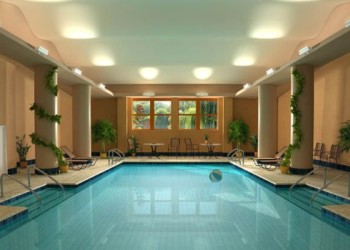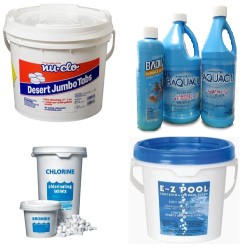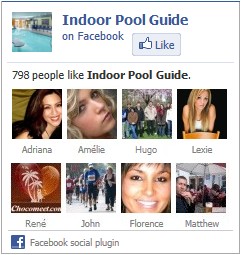
Although located indoor and equipped with a mechanical filter, you should use pool water chemicals to maintain low levels of bacteria and viruses and prevent the spread of diseases and pathogens. Indeed, Bacteria, algae and insect larvae can enter the pool if water is not properly sanitized.
Swimming Pool Water Chemicals
Chemical disinfectants such as chlorine and bromine are commonly used to kill pathogens. Also, it’s important to carefully manipulate the chemical balance in pools to get a proper pool color, ph level, and avoid murky or unclear water.
Major water treatment systems
Below are the various water treatment methods and their relative advantages and disadvantages :
– Water Conditioners : Output water is suitable for low sodium diets, prevents limescale, water utilizing appliances last longer, increases heating efficiency, improves soap efficiency, calcium retained, good for diet, low running cost ; However, it will not treat anything but specific hard water problems ; Costs range from $150 for a small property, $250 for a typical system to $500 for large residential
– Water Softeners : Prevents limescale, increases heating efficiency, lengthens lifespan of clothes ; However, output water may not be suitable for drinking and is expensive to install and maintain ; Costs range from $750 for 35,000 grain capacity to $900 for 48,000 grain capacity
– Activated Carbon (AC) Water Filters : Effective in removing organic contaminants from water, will also remove chlorine ; However, AC filtration does not remove microbes, sodium, nitrates, fluoride, and hardness. Assume that it wont remove lead or other heavy metals unless specified by the manufacturer ; Costs range from $50 for point of use system and $550 for whole house system
– Ultraviolet (UV) Water Filters : Generally kills 99.9% of bacteria and viruses, high filtration capacity (10 Gallons per minute) ; However, only kills bacteria, does not remove the dead cells and won’t remove other contaminents ; Costs are approximately $500
– Water Distillers : Mimics the natural water cycle process. Distilled water is almost completely pure, free from all forms of contaminent ; However, low filtration capacity (6 Gallons per day) and high running cost (25 cents per gallon) ; Costs range from $250 to $1700
– Sand Filters : Removes most bacteria, and turbity, high filtration capacity, generally best used for swimming pools and ponds ; However, take up a lot of space, sulphates and calcium generally not removed ; Costs start from $300
– Reverse Osmosis : Removes substances that would otherwise cause the water supply to be unhealthy or unappealing, for instance foul tastes, smells or colours, removes salts and minerals (lead/mercury) ; However, typically, reverse osmosis systems will only recover about 5% of the water that passes through them, the remainder of which goes down the drain as wastewater, the storage unit for treated water will support bacteria growth unless regularly disinfected ; Costs range from $259 (comes self assembled and ready to install), replacement membranes cost $5-$130




